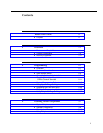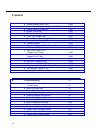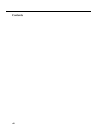
REN Information: The REN is used to determine the quantity of devices which may be
connected to the same telephone line. Excessive RENs on the telephone line may
result in the devices not ringing in response to incoming call. In most, but not all areas,
the sum of RENs should not exceed five (5.0). To be certain of the number of devices
that may be connected to a line, as determined by the total RENs, contact the local
telephone company.
Repair Instructions: If you experience trouble because your equipment is
malfunctioning, the FCC requires that you disconnect the equipment from the network
and not use it until the problem has been corrected. Repairs to this equipment can only
be made by the manufacturer, its authorized agents, or by others who may be
authorized by the FCC. In the event repairs are needed on this equipment, please
contact your local Authorized Dealer or the Lucent Technologies Technical Service
Center at 1-800-628-2888. For warranty information, see Appendix B.
Rights of the Local Telephone Company: If this equipment causes harm to the
telephone network, the local telephone company may discontinue your service
temporarily. If possible, they will notify you in advance. But if advance notice is not
practical, you will be notified as soon as possible. You will also be advised of your right
to file a complaint with the FCC.
Your local telephone company may make changes in its facilities, equipment,
operations, or procedures that affect the proper functioning of this equipment. If they do,
you will be notified in advance to give you an opportunity to maintain uninterrupted
telephone service.
Hearing Aid Compatibility: All system phones are compatible with inductively coupled
hearing aids as prescribed by the FCC.
Industry Canada (IC) Notification and Repair Information
The Industry Canada (IC) label identifies certified equipment. This certification means
that the equipment meets certain telecommunications network protective, operational,
and safety requirements. The IC does not guarantee the equipment will operate to the
user’s satisfaction.
Before installing this equipment, users should ensure that is permissible to connect it to
the facilities of the local telecommunications company. The equipment must also be
installed using an acceptable method of connection. In some cases, the company’s
inside wiring for single-line individual service may be extended by means of a certified
connector assembly (telephone extension cord). The customer should be aware that
compliance with the above conditions may not prevent degradation of service in some
situations.
Repairs to certified equipment should be made by an authorized Canadian
maintenance facility designated by the supplier. Any repairs or alterations made by the
user to this equipment, or any equipment malfunctions, may give the
telecommunications company cause to request the user to disconnect the equipment.
Users, for their own protection, should ensure that the electrical ground connections of
the power utility, telephone lines, and internal metallic water pipe system, if present, are
connected. This precaution may be particularly important in rural areas.
!
CAUTION:
Users should not attempt to make such connections themselves, but should
contact the appropriate electrical inspection authority or electrician, as
appropriate.


















